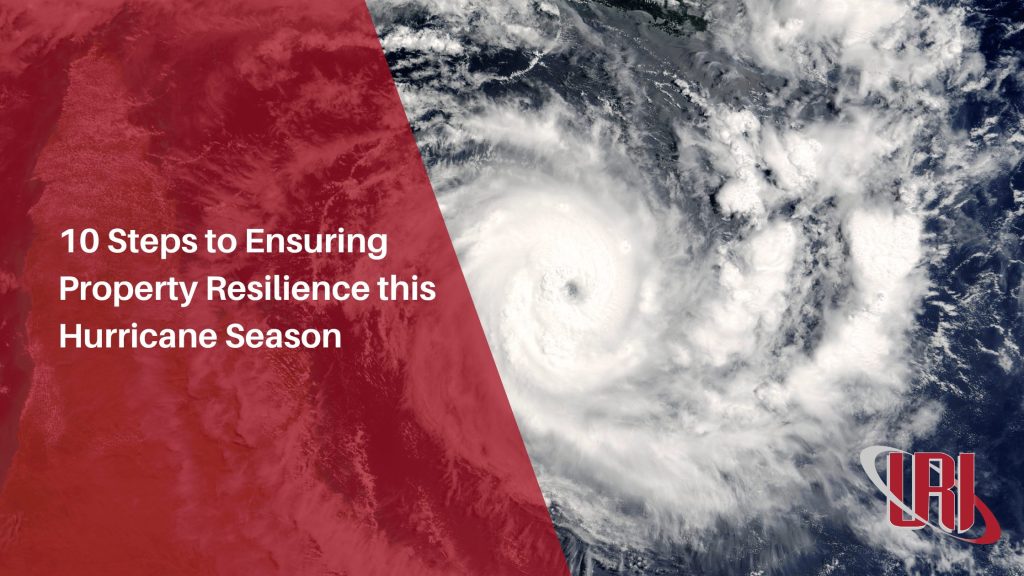
Property, Facility, Community, and Association Management Professionals all play a pivotal role in safeguarding the assets and well-being of those under your care. With an anticipatedly active Atlantic Hurricane Season looming, it’s crucial to take proactive measures to prepare your properties, facilities, and communities. Here are 10 essential steps to ensure both resilience and readiness this hurricane season:
1.Develop a Comprehensive Plan:
Begin by crafting a detailed hurricane preparedness plan tailored to your specific properties, buildings, and even tenants. This plan should encompass evacuation procedures, communication protocols, emergency contacts, and strategies for securing vulnerable areas.
2. Conduct Regular Inspections:
Regular inspections of the property’s infrastructure can help identify weak points that may exacerbate damage during a hurricane. Pay close attention to roofs, windows, doors, and drainage systems, ensuring they are structurally sound and free of debris.
3. Reinforce Structures:
Strengthen the building’s resilience by reinforcing vulnerable areas such as windows and doors with impact-resistant materials. Consider installing hurricane shutters or plywood panels to shield windows from flying debris, minimizing the risk of breakage.
4. Trim Trees and Shrubs:
Overhanging branches and untrimmed foliage pose a significant hazard during hurricanes, potentially causing damage to buildings and power lines. Trim trees and shrubs regularly to reduce the risk of debris and ensure they won’t become projectiles in high winds.
5. Secure Loose Objects:
Loose objects around the property, such as signage, outdoor furniture, and equipment, can become projectiles in strong winds, causing significant damage. Secure or store these items indoors before a hurricane strikes to mitigate potential risks.
6. Backup Power Generation:
Invest in backup power generation systems like generators or uninterruptible power supplies (UPS) to ensure vital systems remain operational during power outages. This includes critical infrastructure such as elevators, emergency lighting, and communication devices.
7. Establish Communication Channels:
Clear and effective communication is essential before, during, and after a hurricane. Establish multiple communication channels, including email, text alerts, and social media, to disseminate important information and updates to tenants, employees, and stakeholders.
8. Coordinate with Authorities:
Stay informed about hurricane forecasts and advisories issued by local authorities. Collaborate with emergency management agencies and local authorities to stay abreast of evacuation orders, road closures, and other pertinent information.
9. Educate Tenants and Employees:
Educate tenants and employees about hurricane preparedness protocols, evacuation routes, and emergency procedures. Conduct regular training sessions and drills to ensure everyone knows how to respond effectively in the event of a hurricane.
10. Develop a Post-Disaster Recovery Plan:
Prepare for the aftermath of a hurricane by developing a post-disaster recovery plan. This should include procedures for assessing property damage, initiating repairs, and coordinating with insurance providers and contractors to expedite recovery efforts.
By implementing these proactive measures and fostering a culture of preparedness, Property, Facility, Community, and Association Management Professionals can minimize the impact of hurricanes on their properties while ensuring the safety and well-being of all stakeholders.
When the unexpected occurs this Atlantic Hurricane Season, you can rest assured with Unlimited Restoration – We’re On It! Call our 24/7 Emergency Response Hotline for immediate assistance: 888.327.9664.